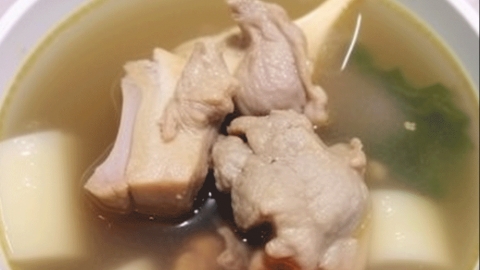What are the TCM syndrome differentiation types and corresponding prescriptions for facial paralysis?
Facial paralysis in traditional Chinese medicine (TCM) is generally classified into the following syndrome types: Wind-Cold invading the meridians, Wind-Heat invading the meridians, Wind-Phlegm obstructing the meridians, Qi deficiency with blood stasis, and Liver Fire ascending. Corresponding commonly used herbal formulas typically include Qianzheng San with modifications, Yin Qiao San combined with Qianzheng San with modifications, Di Tan Tang combined with Qianzheng San with modifications, Bu Yang Huan Wu Tang combined with Qianzheng San with modifications, and Long Dan Xie Gan Tang combined with Qianzheng San with modifications. A detailed analysis is as follows:

I. Syndrome Differentiation
1. Wind-Cold Invading the Meridians: Caused by external contraction of wind-cold affecting the facial meridians. Symptoms include sudden deviation of the mouth corner, facial numbness, accompanied by aversion to cold, fever, headache, nasal congestion, thin white tongue coating, and onset triggered by exposure to cold. There is no sensation of facial burning.
2. Wind-Heat Invading the Meridians: Resulting from external invasion of wind-heat into the facial meridians. Manifestations include deviation of the mouth corner and a burning sensation on the face, accompanied by sore throat, dry mouth, fever with slight aversion to wind, thin yellow tongue coating. Often occurs concurrently with wind-heat type of common cold, without a feeling of heaviness in the face.
3. Wind-Phlegm Obstructing the Meridians: Caused by internal phlegm-dampness combined with external wind pathogen blocking the facial meridians. Symptoms include deviation of the mouth corner, facial numbness and heaviness, chest tightness, excessive sputum, heavy limbs, white greasy tongue coating, and明显 limitation in facial muscle movement.
4. Qi Deficiency with Blood Stasis: Commonly seen in the later stages of facial paralysis due to insufficient qi and blood leading to blood stasis obstructing the meridians. Features include long-standing deviation of the mouth corner and weak facial muscles, accompanied by fatigue, pale complexion, and petechiae on the tongue. Recovery is slow, and muscle atrophy may occur.
5. Liver Fire Ascending: Triggered by excessive liver fire disturbing the facial meridians. Symptoms include deviation of the mouth corner, accompanied by dizziness, headache, red face and eyes, irritability, bitter taste in the mouth, red tongue with yellow coating. Episodes are often related to emotional fluctuations and may be preceded by emotional distress or staying up late.
II. Commonly Used Herbal Formulas
1. Qianzheng San with Modifications: The primary formula for Wind-Cold invading the meridians, composed of Bai Fu Zi (Rhizoma Typhonii), Jiang Can (Bombyx Batryticatus), and Quan Xie (Scorpio). It dispels wind and cold, unblocks meridians, and relieves spasms. For marked aversion to cold, Fang Feng (Saposhnikovia root) and Sheng Jiang (fresh ginger) can be added to enhance efficacy.
2. Yin Qiao San combined with Qianzheng San with Modifications: Suitable for Wind-Heat invading the meridians. Yin Qiao San clears heat, detoxifies, and disperses wind-heat, while Qianzheng San unblocks meridians and stops spasms. For severe sore throat, Ban Lan Gen (Isatidis Radix) and Ju Hua (Chrysanthemum flower) can be added.
3. Di Tan Tang combined with Qianzheng San with Modifications: Targeted at Wind-Phlegm obstructing the meridians. Di Tan Tang dries dampness, resolves phlegm, and opens the orifices to unblock meridians, while Qianzheng San dispels wind and stops spasms. For prominent symptoms of excessive phlegm and chest fullness, Chen Pi (Citrus peel) and Fu Ling (Poria) can be added.
4. Bu Yang Huan Wu Tang combined with Qianzheng San with Modifications: Used for Qi deficiency with blood stasis. Bu Yang Huan Wu Tang tonifies qi, activates blood circulation, and resolves stasis to unblock meridians, while Qianzheng San unblocks meridians and alleviates spasms. In cases of severe fatigue, the dosage of Huang Qi (Astragalus root) can be increased.
5. Long Dan Xie Gan Tang combined with Qianzheng San with Modifications: Applicable for Liver Fire ascending. Long Dan Xie Gan Tang clears and drains liver fire and directs heat downward, while Qianzheng San unblocks meridians and stops spasms. For significant dizziness and headache, Tian Ma (Gastrodia rhizome) and Gou Teng (Uncaria hook) can be added.
Treatment of facial paralysis must be guided by a qualified TCM practitioner based on individualized pattern differentiation; self-prescribing and taking herbal medicines without professional supervision are strongly discouraged. During treatment, patients should keep the face warm, avoid direct exposure to cold wind, and minimize facial irritation.




